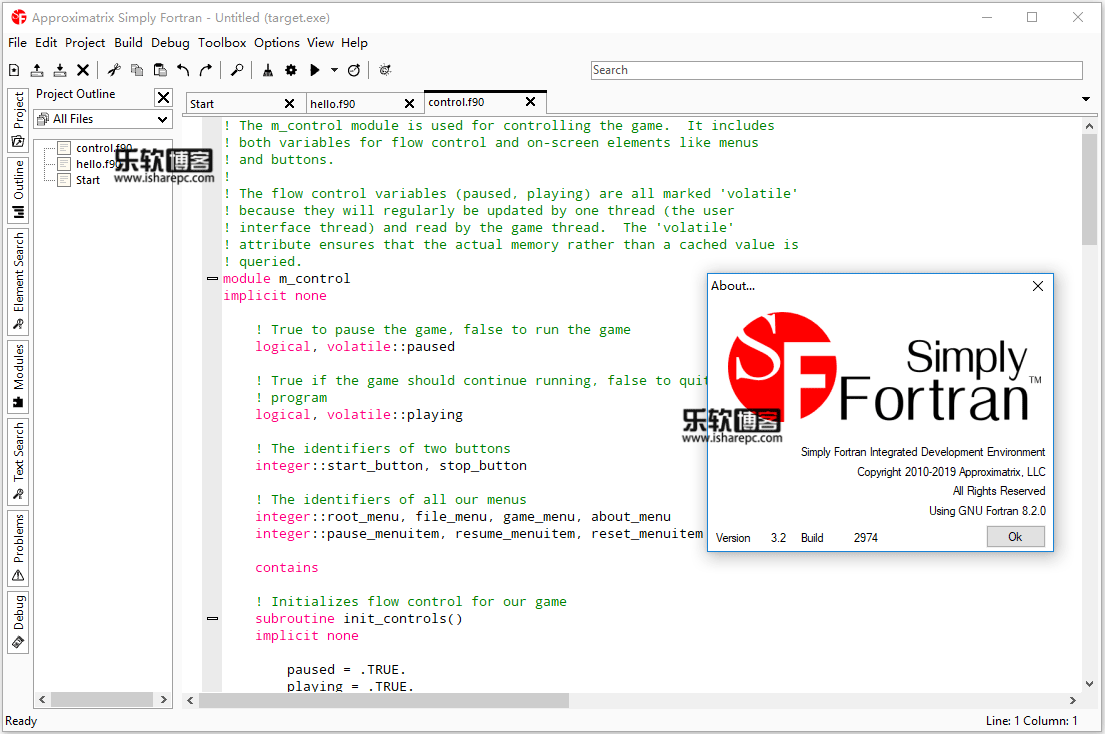

The full detail of the early history can be found in Backus’ paper The History of FORTRAN I, II, and III.
Simply fortran key manual#
The initial concept was first proposed internally at IBM in 1953, the initial specification in 1954, and the first manual in 1956. It’s difficult to say when FORTRAN achieved a critical mass of usage, but the initial compiler was delivered in 1957, according to the Wikipedia Fortran article. The FORTRAN moment was not a precise moment or specific event, but more of a process, beginning with its conception, its design, its initial implementation, its initial use by its creators, and culminating with wider usage.
Simply fortran key software#
Some of the more complex and sophisticated applications and underlying system software continued to require mastery of machine language, but that quickly become a increasingly minor subset of the total audience and total market. Now, they could master programming much more easily.Īnd the audience and market capable of assimilating computer systems greatly expanded, no longer limited to the very few, the very elite, and only the most motivated. Actually, they could master it before FORTRAN, but only with a great expenditure of time and energy. Programs became much simpler and much easier to write.Įven non-computer scientists and non-computer engineers could now master programming. Input and output and formatting of data was another key contribution of FORTRAN.


The key benefit was that the programmer could focus on their algorithm and logic in terms much more familiar to mathematicians and (non-computer) scientists and engineers - most notably algebraic expressions and control flow (particularly loops) - rather than the bits, words, registers, and instructions of the bare machine. There were some earlier attempts at higher level languages - see the Wikipedia History of programming languages article - and they actually had some limited success, but FORTRAN made a much bigger and durable splash, comparable to the ENIAC moment on the hardware front of classical computing. I use the original all caps name since I’m referring to the original introduction of FORTRAN rather than the eventual, modern usage. Fortran 90 changed the name to mixed case. FORTRAN 77 was the last release with the name in all caps. Note: Technically FORTRAN is no longer written in all caps as I do here. It was developed in the mid-1950’s by John Backus and others at IBM to dramatically reduce the level of effort required to develop scientific and engineering applications for classical computers. It is a programming language focused on numerical calculations such as commonly found in scientific and engineering computation. This informal paper will explore the need and potential for such a FORTRAN moment for quantum computing.įORTRAN is short for Formula Translation. A high-level language analogous to FORTRAN would allow quantum computing to turn the corner and leap from a fairly narrow niche of very elite experts to a much broader, mainstream market. Programmers did amazing things back in those days, and will likely do some amazing things with raw qubits and quantum logic gates over the next few years, but as with early classical computing, the audience and potential market is greatly limited by such a primitive programming environment. Everything is currently done in terms of raw qubits and raw quantum logic gates, not unlike working in machine language or assembly language on the early classical computers of the 1940’s and 1950’s before high-level languages such as FORTRAN, COBOL, LISP, PL/1, and BASIC were invented. Quantum computing currently lacks a high-level programming language and associated high-level programming model. When Will Quantum Computing Have Its FORTRAN Moment?


 0 kommentar(er)
0 kommentar(er)
